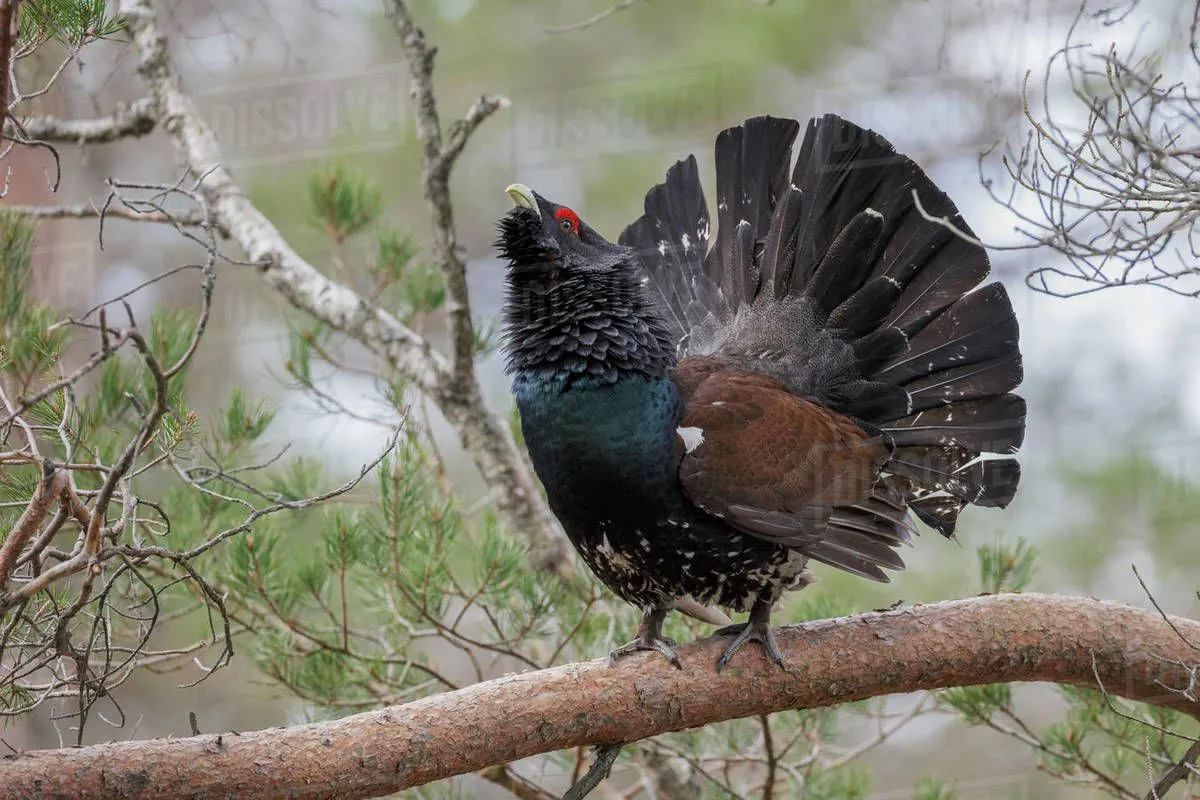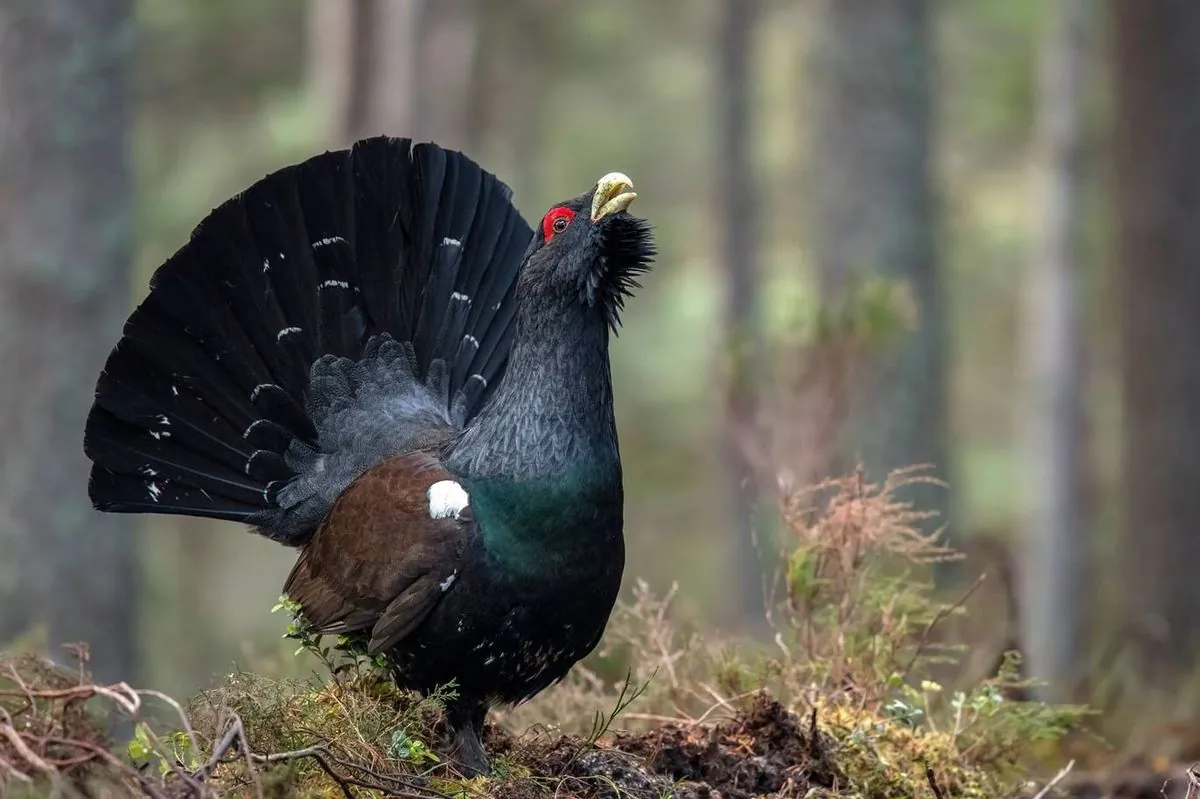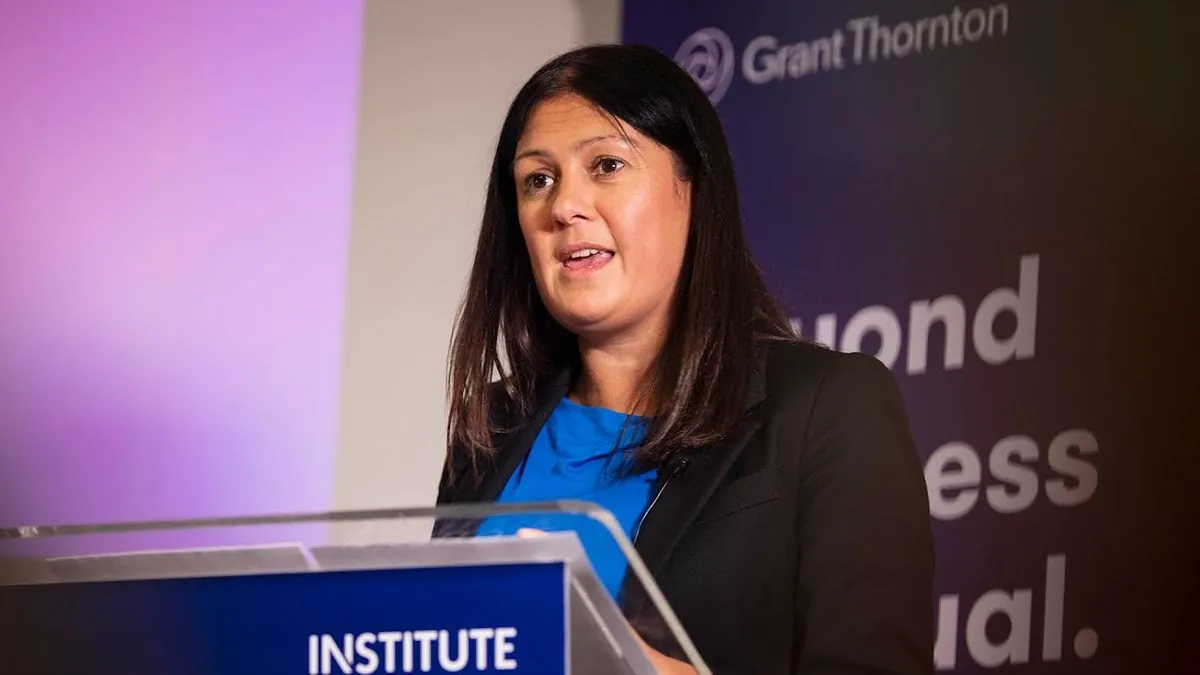Scotland's Capercaillie Face Extinction as Male Numbers Plummet
Scotland's capercaillie population is in crisis, with male numbers dropping sharply. Experts warn of potential extinction without urgent action, calling for public awareness to save this iconic forest bird.

The capercaillie, Scotland's largest grouse species, is facing a critical decline in its population, prompting concerns of a "second extinction" in the country's forests. Land managers have reported a significant decrease in male bird numbers, raising alarms about the species' future.
In the summer of 2024, only 153 male capercaillies were observed at leks, the areas where these birds engage in their elaborate mating rituals. This figure represents a decrease of 15 individuals compared to the previous year. Tetrao urogallus, the scientific name for capercaillie, has been a part of Scotland's ecosystem since its reintroduction in 1837, following its extinction in the 18th century.

If the current trend continues, experts project a 43% decline in capercaillie numbers by the time of the next national survey in 2027/28. This potential decrease is particularly alarming considering the species has already experienced a 50% reduction in population, as recorded in the most recent survey conducted in 2021/22.
The capercaillie's plight extends beyond Scotland, as the species is considered vulnerable globally according to the IUCN Red List. While the worldwide population is estimated at 1.5 to 2 million individuals, the Scottish population has dwindled to a mere 542 birds.
Conservation efforts are underway, with NatureScot, the Scottish Government's nature advisers, and the Cairngorms National Park preparing to publish an emergency action plan. However, some experts argue that the plan may not adequately address the threat posed by predators to capercaillie eggs and chicks.
The survival of capercaillie in Scotland is closely tied to the Cairngorms National Park, where over 80% of the population resides in pinewoods. These birds, which can weigh up to 6.5 kg and have a wingspan of 1.2 meters, play a crucial role in forest ecosystem dynamics by dispersing seeds.
"We've witnessed this dramatic decline with our own eyes and feel compelled to inform the public of the current situation. Sadly, everything we said in the past has been borne out in the recent counts. The numbers don't lie. The last chance, therefore, is for the public to know the facts, with no spin."
Experts emphasize that public awareness and pressure on authorities may be the "last remaining hope" for the capercaillie's survival as a breeding species in Scotland. The situation is further complicated by the impact of climate change on breeding success and the ongoing challenge of habitat fragmentation.
NatureScot has proposed measures such as "diversionary feeding" of predators during the breeding season. Chris Donald, NatureScot's head of operations for central Highlands, acknowledged the species' vulnerability, stating, "There's no doubt that the capercaillie population in Scotland is extremely vulnerable, and that the future of the species is at risk."
As conservation efforts continue, the fate of the capercaillie in Scotland remains uncertain. The upcoming emergency plan will be crucial in determining whether this iconic "horse of the woods" can overcome the challenges it faces and avoid a second extinction in the country's forests.


































